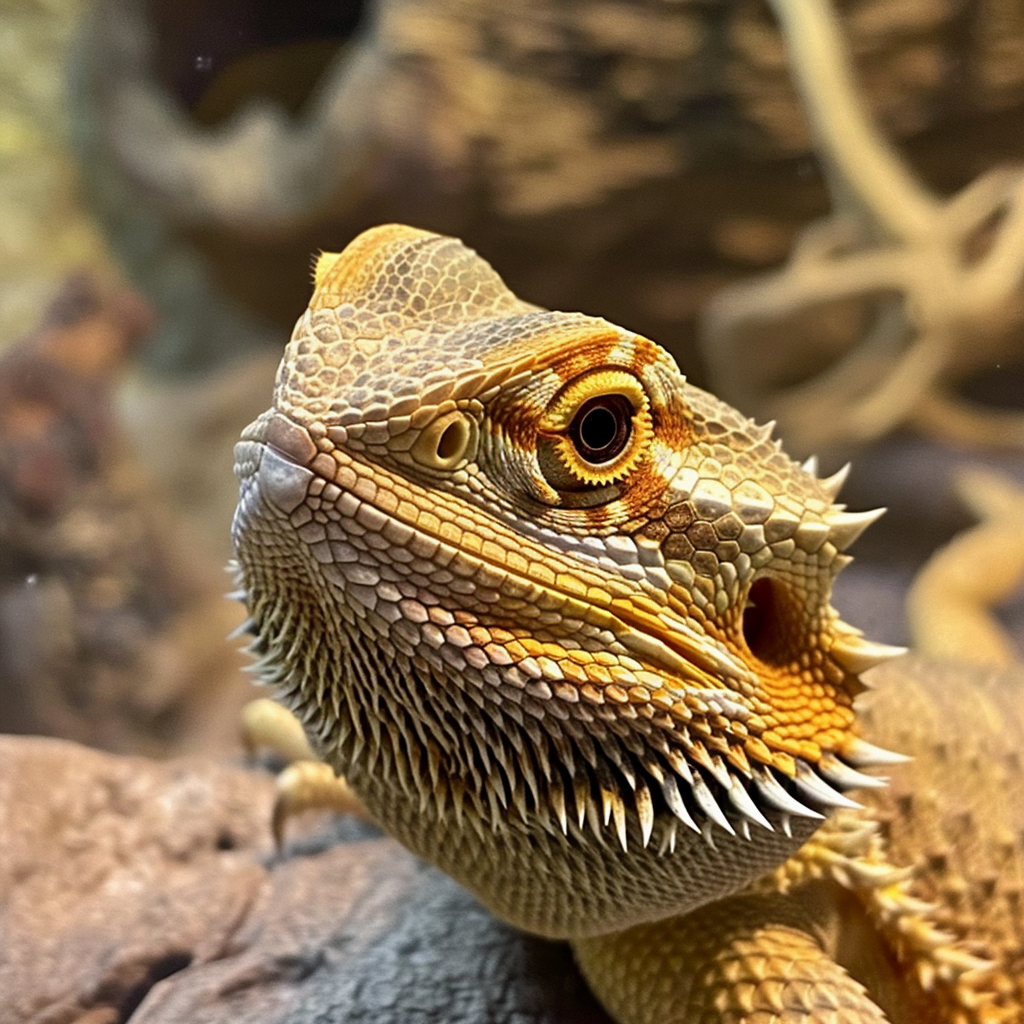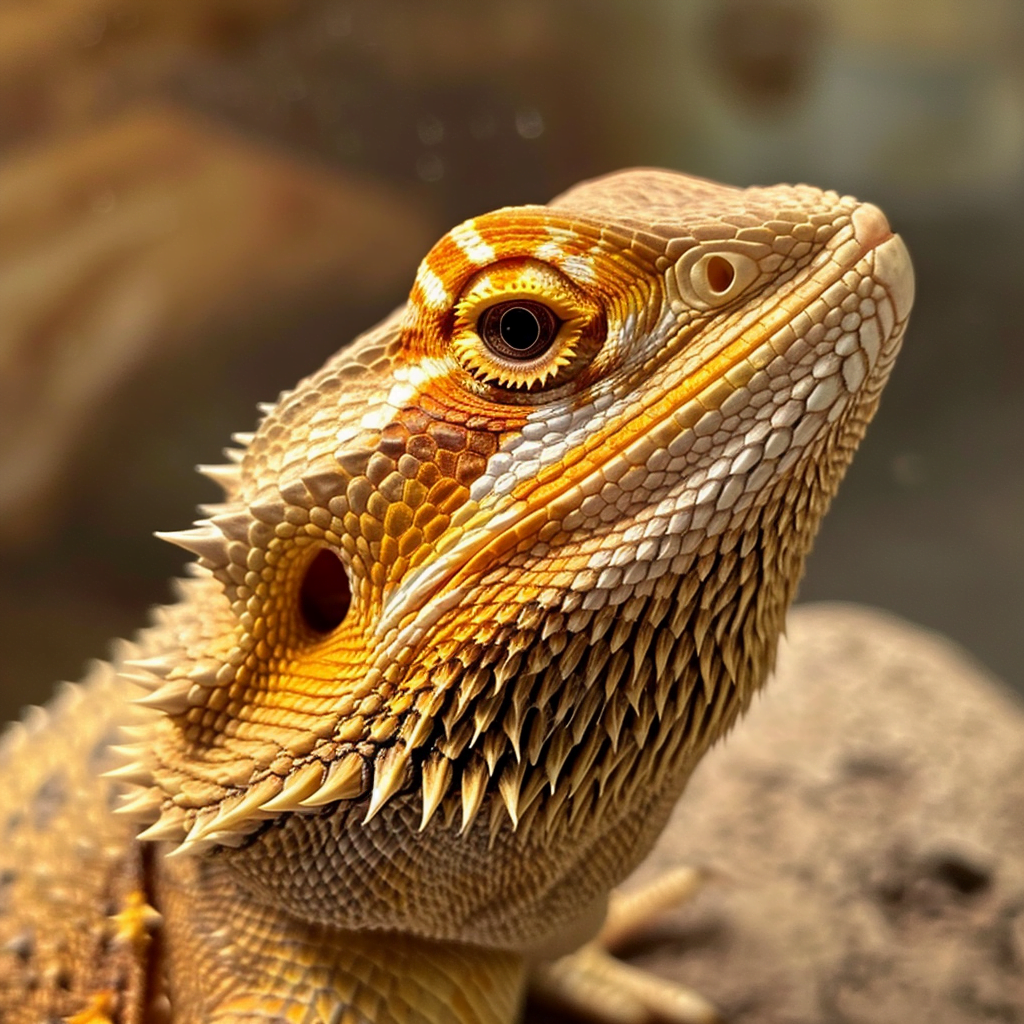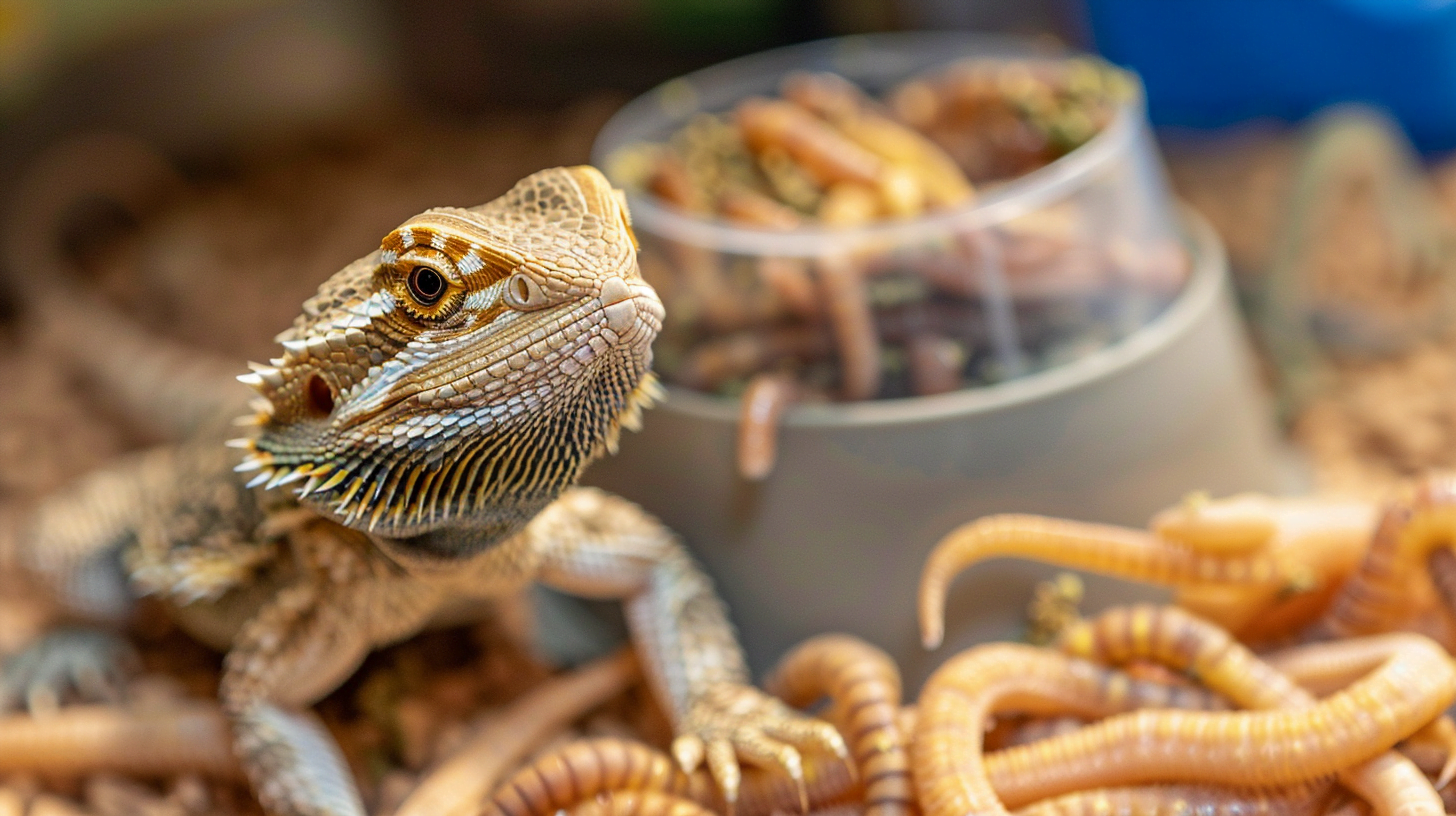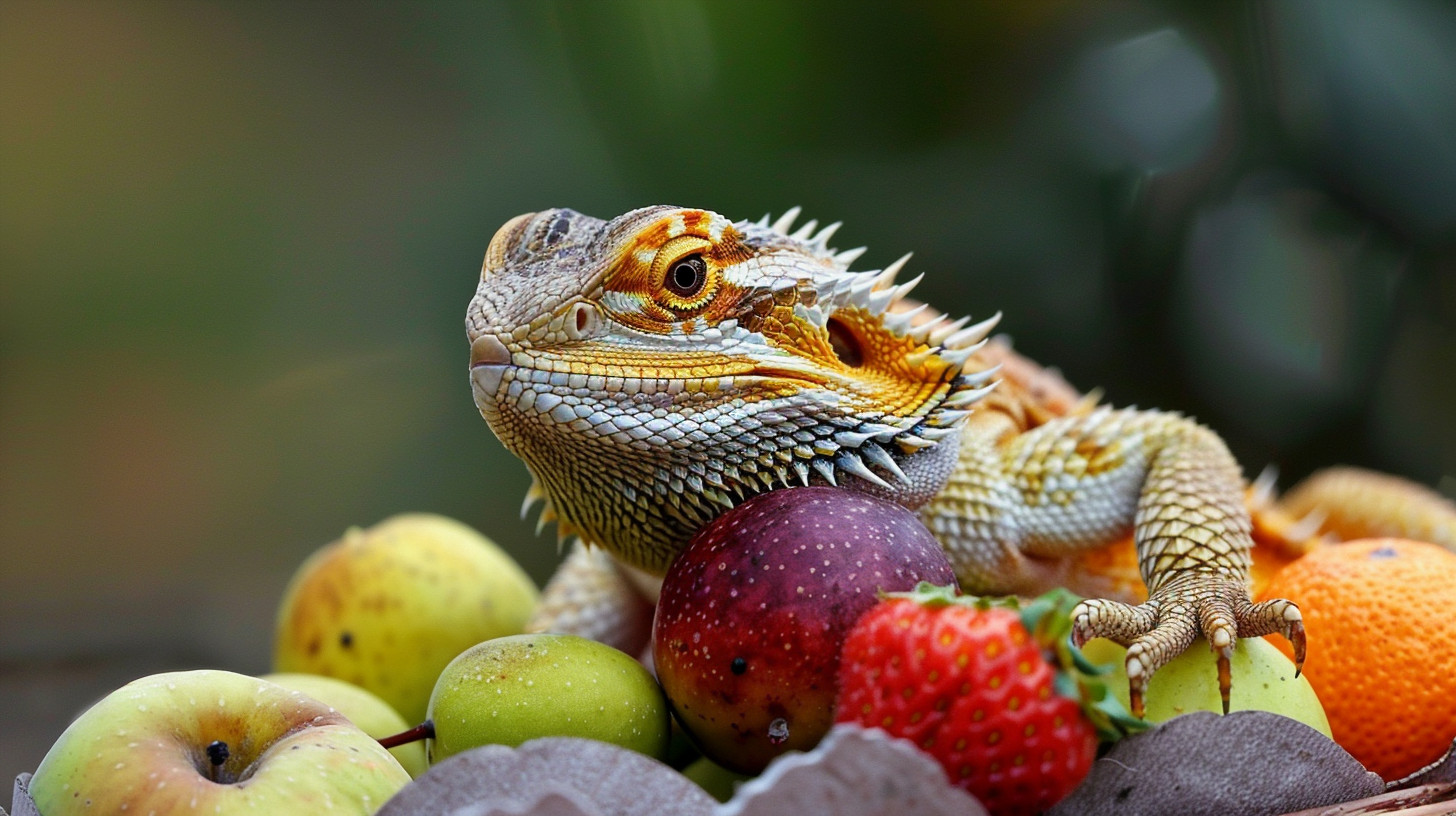Bearded dragons are known for their friendly personalities and endearing behaviors. One of the most common things you may notice your bearded dragon doing is bobbing its head up and down. This strange nodding motion is completely normal, but what does it mean when your bearded dragon bobs its head? Lets find out… Why Does My Bearded Dragon Bob Its Head?
Typical Head Bobbing Behavior in Bearded Dragons
Head bobbing is a standard part of a bearded dragon’s natural behavior. They will frequently bob their head up and down in a nodding motion repeatedly. Here’s what normal head bobbing looks like:
- The bearded dragon’s head will move up and down, like it is nodding yes.
- The motion is smooth and controlled, not jerky.
- Frequency can vary from a few bobs to bobbing continuously.
- Bobbing often happens in bursts of several head bobs in a row.
Bearded dragons may bob their heads when:
- Feeding – Especially when eating live insects, the motion helps them better locate and capture prey.
- Interacting with other bearded dragons – They may bob their heads as a form of communication with each other.
- Noticing movement or new stimuli – The head bobbing allows them to see the motion from different angles.
- Displaying interest or excitement – Much like a tail wag in a dog, it signals they are engaged with something.
Reasons Why Bearded Dragons Bob Their Heads
So why do bearded dragons bob their heads so much? Here are some of the main reasons and theories behind this behavior:
Communication and Signaling Other Bearded Dragons
Head bobbing is believed to be a way bearded dragons communicate with each other. The nodding motions, combination of arm waves, and black beards convey information to other bearded dragons around them.
Showing Dominance and Territory
More dominant and territorial bearded dragons will head bob to show their dominance and claim space from other less dominant dragons.
Displaying Interest or Excitement
The up and down head motions allow a bearded dragon to examine something from different angles. So bobbing often signals they are engaged and intrigued by something they see.
Part of Mating Rituals and Courtship
Male bearded dragons will frequently bob their heads when attempting to court and impress female dragons. This behavior is connected to breeding.
Stretching Their Neck
Much like other lizards, head bobbing allows bearded dragons to stretch their neck muscles and warm up their bodies.
General Exploring of Their Surroundings
When investigating their habitat or looking for food, bearded dragons will bob their heads to get different vantage points. It helps them survey their environment.
Reaction to Reflections
Seeing their reflection in a vivarium glass or mirror can sometimes elicit head bobbing as the bearded dragon reacts to what it sees as another dragon.

Differences Between Males vs Females Head Bobbing
There are some differences between male and female bearded dragon head bobbing:
- Males tend to bob more aggressively, especially when confronting other males. Their bobbing is rapid and pronounced.
- Females may bob their heads more slowly and with less vigor than males. They will also bob as a submissive gesture.
- Breeding season influences head bobbing in both males and females, becoming more frequent during mating time.
| Gender | Typical Head Bobbing Behaviors |
|---|---|
| Males | More aggressive and rapid head bobbing |
| Females | Slower head bobbing, sometimes submissively |
Should You Be Concerned About Frequent Head Bobbing?
For the most part, frequent head bobbing is completely normal and not a cause for concern. However, if your bearded dragon is suddenly bobbing its head way more than usual, watch for other signs of stress, illness, or aggression:
- Black beard – Darkened beard along with lots of head bobbing can signal aggression.
- Change in behaviors – Lethargy, lack of appetite, hiding, or restlessness accompanying head bobbing may indicate a health problem.
- New onset increased bobbing – If excessive head bobbing is new and out of character, have your dragon examined for causes.
Contact your exotic veterinarian if your bearded dragon’s head bobbing seems abnormal or combined with any unusual symptoms. Frequent bobbing alone is no worry, but if paired with other changes, a veterinary visit is recommended.
Tips for Managing Your Bearded Dragon’s Head Bobbing
While head bobbing is normal, you can try to reduce over-bobbing:
- Provide proper habitat – Have the ideal temperature gradient, UV lighting, and plenty of space to reduce stress.
- Give them their own space – Provide hides and levels for them to claim their own territory.
- Introduce new dragons slowly – Overcrowding or fast introductions to other bearded dragons may cause too much bobbing and competition.
- Limit glass/mirror exposure – Seeing reflections can sometimes incite flurries of head bobbing.
- Check for causes of excitability – Make sure the habitat is free of issues leading to hyperactivity.
Conclusion
In summary, head bobbing is a completely normal and natural part of a bearded dragon’s behavior. It can serve as communication, signal interest or dominance, aid in exploring, and help stretch their bodies. While no cause for alarm on its own, take note if head bobbing increases suddenly or combines with other unusual symptoms in your dragon. With proper care and environment, you can enjoy this quirky behavior that makes bearded dragons so full of personality. Speak with an exotic veterinarian if you have any concerns about excessive head bobbing in your dragon.




